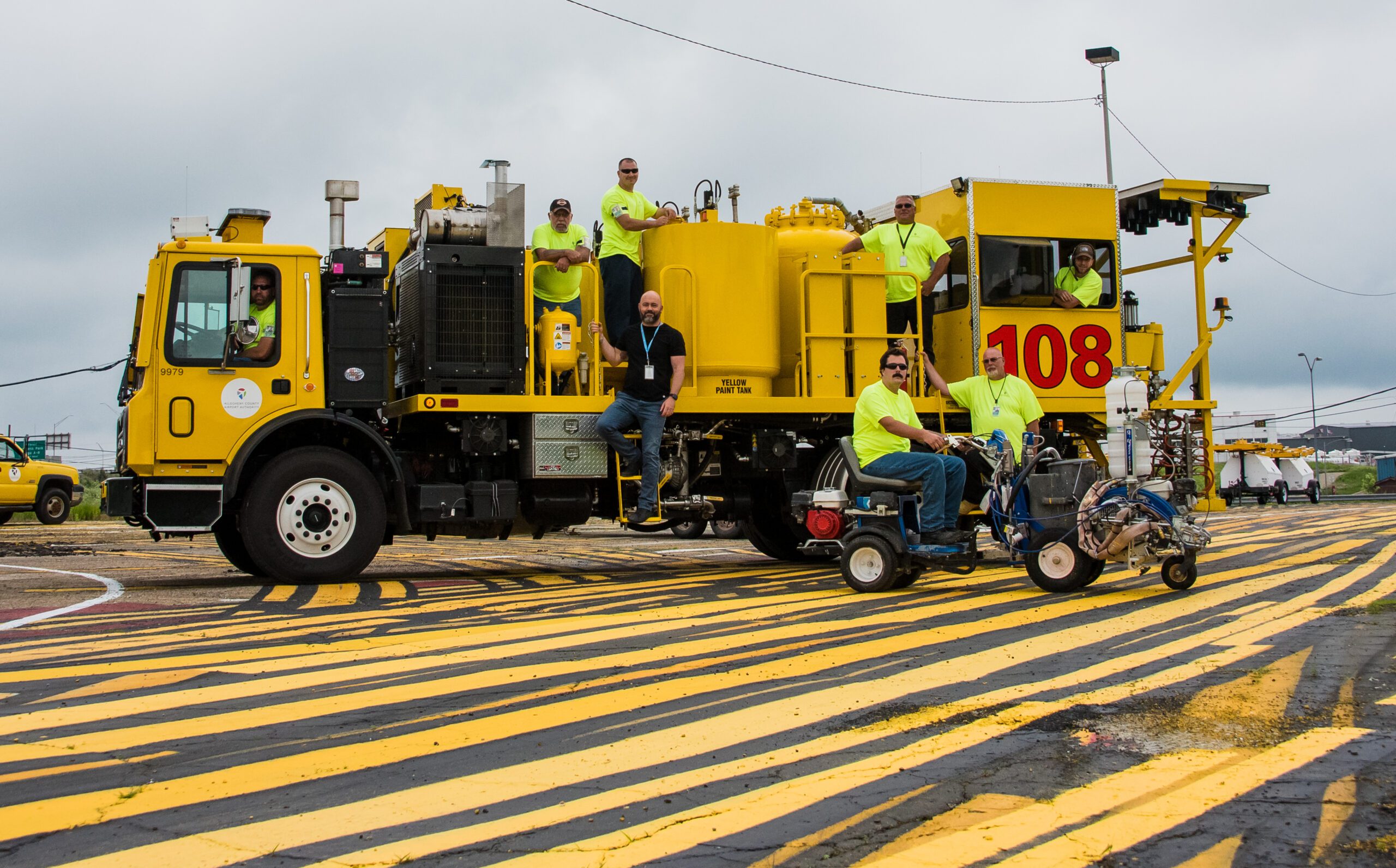PIT’s Artist-in-Residence Unveils Final Work
Artist Blaine Siegel wraps up year-long project with some help from the PIT paint crew and carpenters
By Matt Neistei
Published August 5, 2019
Read Time: 3 mins
(Photos and video by Beth Hollerich)
The first-ever artist residency at Pittsburgh International Airport ended much like it began: with a team of people working together to figure out how to do something they’d never done before.
That spirit of collaboration infused the entire project, in which artist Blaine Siegel was given studio space in the airport and full access to its employees and operations with the goal of creating an original work of art inspired by the airport itself.
Siegel officially unveiled “Industrial Paintings” at an invitation-only event at the airport on Monday, the end result of more than a year of exploration and creativity.
“Blaine Siegel’s work here was about more than creating a phenomenal work of art, although he certainly did that,” said Allegheny County Airport Authority CEO Christina Cassotis at the unveiling event. “It was also about reinvigorating the idea that airports are common spaces that should reflect the beauty and unique character of their communities.”
The final work is a series of three paintings patterned after the airport’s “paint pad,” a patch of asphalt where Airport Authority workers test the truck that paints lines and other markings on the paved surfaces of the airfield, like runways and ramps.
The paintings are hanging from three consecutive concrete beams in the food court area of the Airside Terminal’s Center Core. Getting them there, however, involved the last major collaborative effort of the project.
Nothing like this had ever been hung from the beams or similar structures in the airport. After testing out different methods, the carpenter shop decided to go with French cleats, a simple but elegant method where beveled wooden blocks are secured to the beams, and blocks with matching beveling are secured to the backs of the paintings.
Any concern about the creative solution evaporated when the two sets of blocks matched perfectly as the paintings were hung.
“This project has had so many people that I had to work with in order to pull it off … It’s kind of broadened how I think about working on projects,” he said. “I was really able to rely on other people’s expertise in pulling off something with a broader scope.”
The paint pad’s random swirls of yellow, black and white paint immediately intrigued Siegel when he saw it. Among other methods, he created the horizontal paintings by laying canvas down on the pad and allowing workers to drive over it with the paint truck and smaller “EZ rider” vehicles also used as part of the airfield painting process.
“(The residency) is such a unique opportunity to immerse yourself into the culture of something and to create specifically just from that,” Siegel said. “I said to myself going into it that I only want to make something that could be made there with the resources that existed there.”
Siegel says he’s got several ideas for artwork stemming from his yearlong residency, one of only a handful in airports worldwide, and said PIT Arts and Culture Manager Rachel Rearick said the unique project will influence the role of art at Pittsburgh International going forward.
“I think that Blaine’s final project is intuitive and makes absolute sense, as related to his experience with us,” she said. “Throughout his time here, I witnessed his continuous excitement about the paint pad, even as other aspects of PIT also caught his attention. It encapsulates his contextual work, our team and the environment of aviation.”
Powered by flickr embed.
Watch
This Next
Read
This Next






